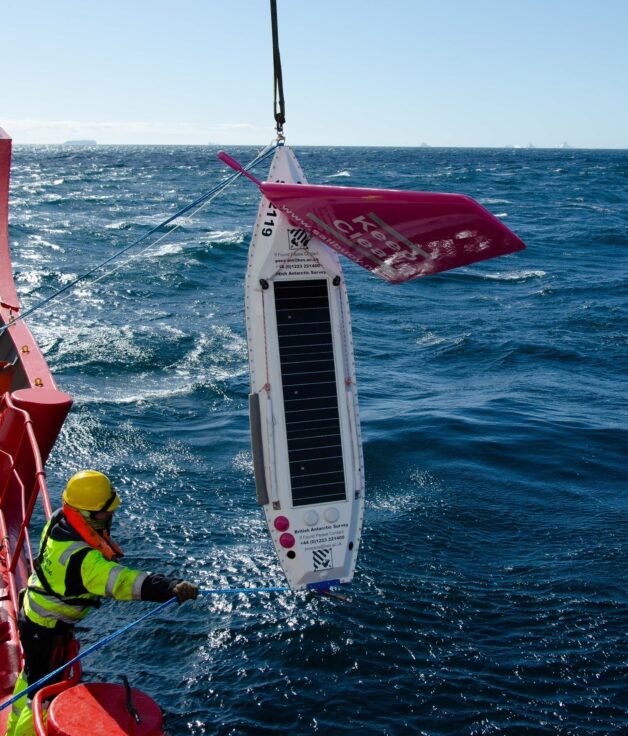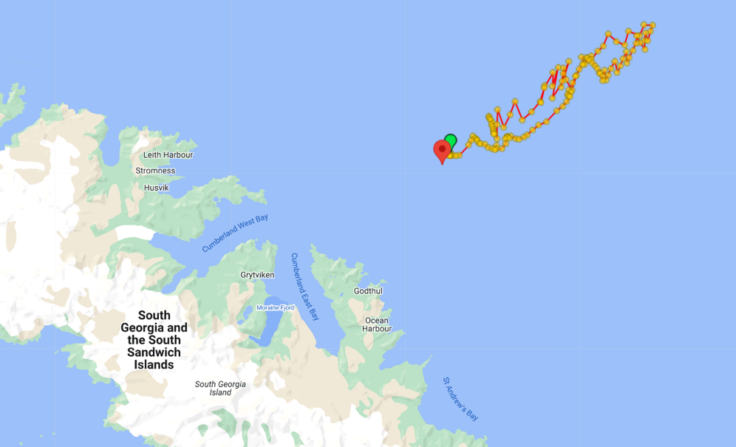Sailbuoy Ahoy! Uncrewed surface vessel launched in South Georgia
Scientists studying krill in the sub-Antarctic have successfully completed a three-day mission using a Sailbuoy uncrewed surface vessel (USV). This mission marks the first Maritime and Coastguard Agency (MCA) approved deployment of a USV for science around South Georgia.
Sponsored by NERC’s Future Marine Research Infrastructure (FMRI) programme, a team from British Antarctic Survey (BAS) and the National Oceanography Centre (NOC) have been working with the MCA to overcome the challenges to securing the MGN 664 certification required for an autonomous platform to operate within territorial waters. As a result of this work, BAS received MCA approval to deploy the Sailbuoy and demonstrate a more sustainable and affordable approach to marine monitoring.
The Sailbuoy was launched from the Government of South Georgia and the South Sandwich Islands (GSGSSI) fishery patrol vessel MV Pharos SG in January, with the support of BAS ecosystems scientists both on-board and piloting from Cambridge. Over three days the Sailbuoy collected data on Antarctic krill abundance, alongside measurements of temperature, oxygen, salinity, and phytoplankton (small ocean algae) off the coast of South Georgia.

Krill are small shrimp-like crustaceans that occur in massive aggregations, and are important in the diet of many higher predators and the target of a commercial fishery. Typically, they are monitored using echo sounders on research or fishing vessels. This mission trialled the use of autonomous systems to both collect the data we need and help achieve our net zero goals.
The MV Pharos SG undertook acoustic transects in the vicinity of the deployment also collecting data on Antarctic krill abundance and distribution. By deploying the Sailbuoy alongside a ship fitted with echo sounders, the team has gathered vital information and inter-calibration data to assess the capabilities of small autonomous vehicles to independently monitor Antarctic krill populations.

The Sailbuoy is part of the World Class Lab fleet and is a small (2m long) ocean-going surface vehicle. Using wind-powered propulsion and solar powered sensors, the Sailbuoy navigates between waymarked locations using satellite positioning and can be updated during its deployment via a web portal by shore-based scientists.
Many thanks to the team at NOC for working with BAS to obtain relevant permissions for deployment, and the deployment team at King Edward Point, the GSGSSI and the crew of the MV Pharos SG.